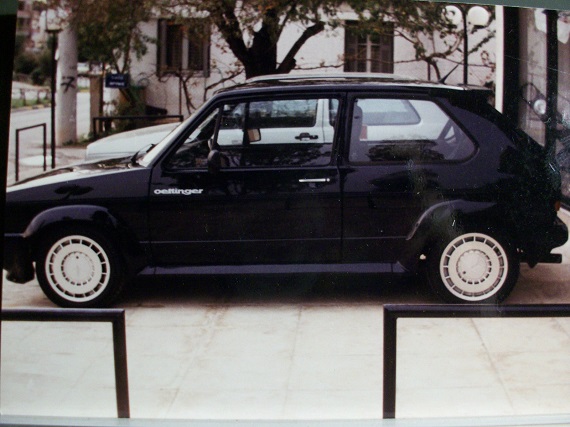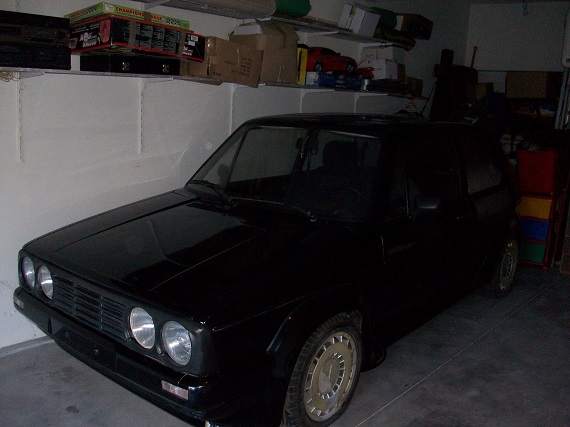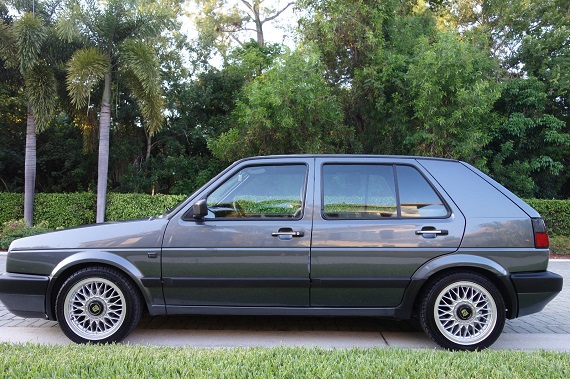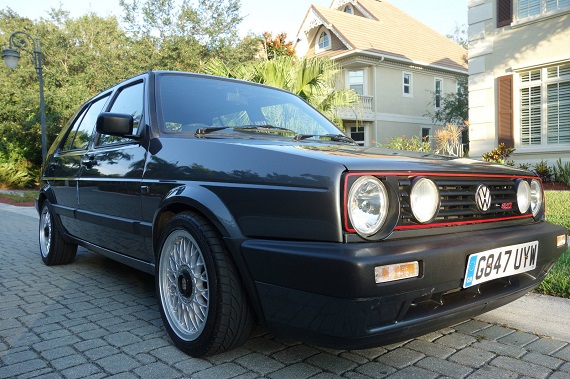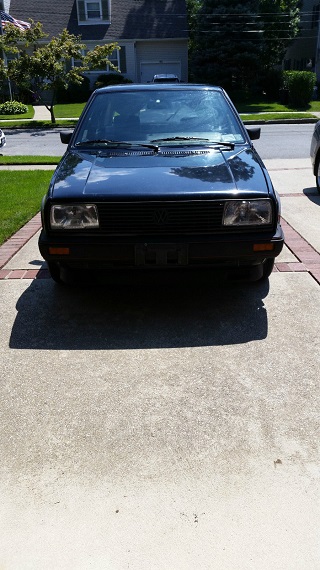Let’s suspend our rules of engagement at GCFSB for a post and look towards Germany’s western neighbor, France. While we write up a Swede from time to time, it’s not often that French cars make our blog. But since the Franks, who established rule over France under the Merovingians in the late 400s, were actually a Germanic tribe, let’s make an exception and consider this listing. Being a fan of European cars, it’s not often that I get stumped by one – but in my normal searches I came across the front end of what appeared, at first, to be a Peugeot 205 GTI. The 205 is perhaps the car that out-GTI’d the original GTi, better handling, awesome looks and more speed meant it’s become as legendary as the car credited with starting the market segment. But it didn’t look quite right, and a closer inspection revealed it was in fact the bigger brother of the 205; the 309. In GTI trim, they mimicked the recipe started by Volkswagen; turn up the engine, lower the suspension, fit larger alloys and of course stick red accents and “GTI” badges everywhere. Producing 120 horsepower and with low weight, these were fairly potent hatchbacks in their day:
Tag: Hot hatch
Which came first; the Mk.1 or the modified Mk.1? Of course it’s a rhetorical question, but it points to the popularity of the first water-cooled Volkswagens. Affordable, practical and plentiful, the aftermarket community thrived on providing all sorts of options to modify your Golf/Rabbit to all sorts of levels. With everything from body kits to performance modifications and interiors, there was seemingly no end to the possible permutations of combinations of parts to make your mass-produced hot hatch a bit hotter and different from everyone else. But weed through the plethora of upstarts, and perhaps the most respected name in the Mk.1 community is Oettinger. Though somewhat out of vogue today, we should not forget that Oettinger pioneered the twin cam, 16 valve engine for Volkswagen – in production as early as 1980, a full 7 model years before Volkswagen’s own 16V would enter service. They competed in motorsport as well, developing rally engines and everything from turbocharged diesels to a full 2 liter 16V motor developing 170 horsepower in 1984; Oettinger-equipped Golfs were quick enough to accelerate on par with production Porsche 928s of the period. Today, their legendary status in the Mk.1 community means that fully built, period models demand a premium even if they’re rare to come by:
CLICK FOR DETAILS: 1983 Volkswagen Golf Oettinger on eBay
Comments closedI wonder when the Mk.2 market is really going to blow up. For some time, it’s been the A1 models and Sciroccos that have really drawn the big money. Of course, on the other side the Mk.2 market is bookended by the Corrado market, which has always been quite hot. But the 1985-1992 Golf was a very popular platform; I had one, my friends had them, and we drove them hard and turned them up. They were European style on the cheap, versatile and economic hatches that were fun to drive, reasonably reliable and just different enough from the norm to make you feel special. But today, 23 years after the Mk.2 left U.S. shores, there are precious few left in good original shape. I don’t think that the Golf was ever intended to be a collector car, mind you – but then, neither was the original Mk.1 Golf, and those have certainly proven their staying power. However, in Europe, the Mk.2 crowd is – if anything – much stronger than it was in the U.S., and since Volkswagen sold more of the later models in Europe and they’re now becoming import legal, it seems appropriately time that these models start sneaking over to these shores, primed to take advantage of a surging 1980s market:
CLICK FOR DETAILS: 1990 Volkswagen Golf GL on eBay
1 CommentI wonder if the A2 GTi is really as near extinction as I’ve claimed it is. I mean, sure – there are still countless A2s cruising around on Raceland coilovers with too many stickers on a 45 degree on the rear windows with VR6 or 1.8T swaps and too-wide BBS RSs. There are even more crumbling in their decaying potential, smashed and grabbed by owners with the promise that they’ll be something again someday. But clean, original and unmolested GTis? Now, that’s quite rare. Especially rare seem to be the very early models, the 1985 and 1986 1.8 8 valve model. While the GTi was much more fun when the valves were doubled, the original model still sported a higher compression motor capable of making the tossable A2 an entertaining ride. When I was in college, I had a 1984 GTi and worked with a guy who had inherited a 1986 model without knowing or really caring what it was. He told me that it wasn’t running right and asked me to take it for a ride, which I was happy to do. A quick run through an on ramp and onto the highway with a quick blast up to illegal speeds confirmed my belief that he wasn’t much of a Volkswagen connoisseur – it was easily quicker than my ’84 model, especially above 40 m.p.h., where my Italian tuneup yielded smooth and responsive power. No one will mistake the GTi for a Lamborghini, but in terms of sheer enthusiasm, the 1.8 mill is a motor that encourages thrashing – perhaps an indication as to why so few are left today:
CLICK FOR DETAILS: 1986 Volkswagen GTi on eBay
1 CommentBack in January, this GTi popped up in strong, mostly original condition but with an even stronger asking price. I suggested it was unlikely to sell at $9,500 – and it appears I was correct, as it’s back up for sale with a substantial 20% price drop to $8,000. While that price is getting more realistic, it still strikes me as a bit strong considering the similar cars we’ve seen sell recently. Still, what other legendary classic car could you purchase for under $10,000 and enjoy at 10/10ths? Finding original examples of the hot hatch will continue to be difficult and always make me smile!


